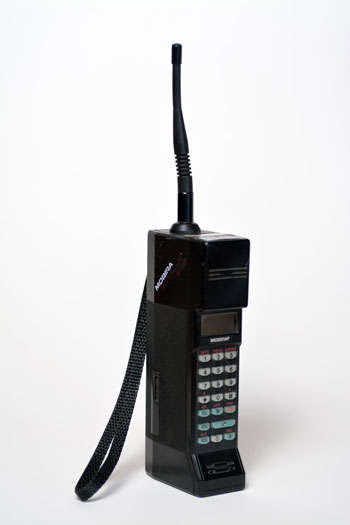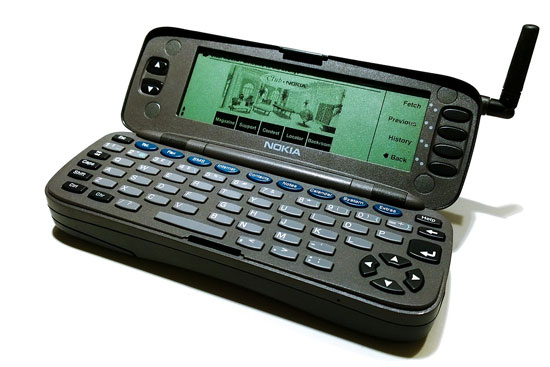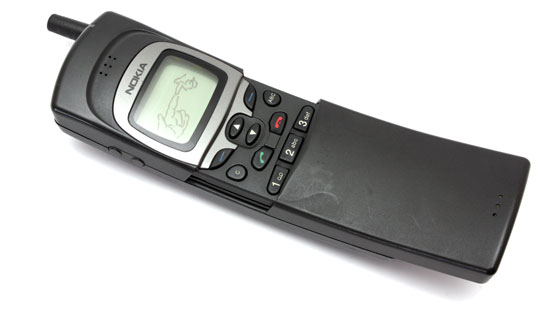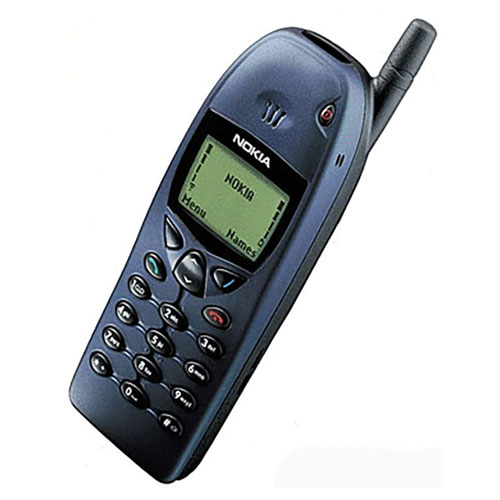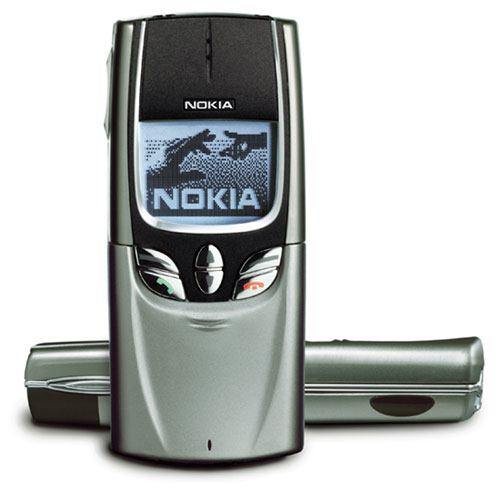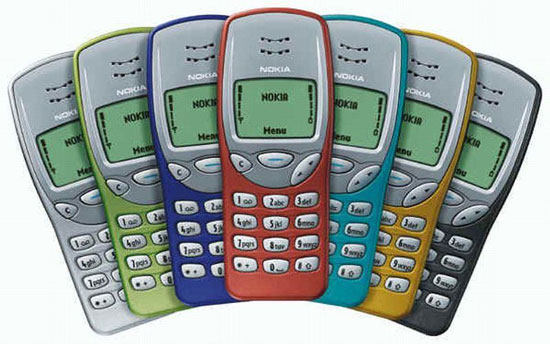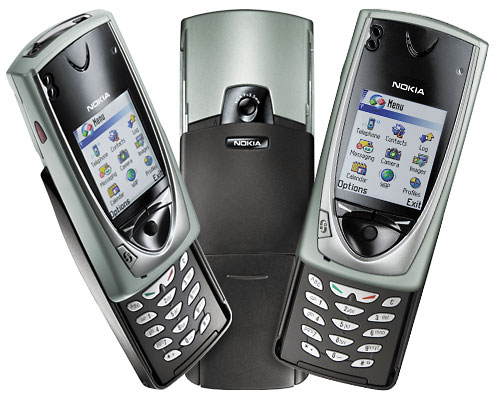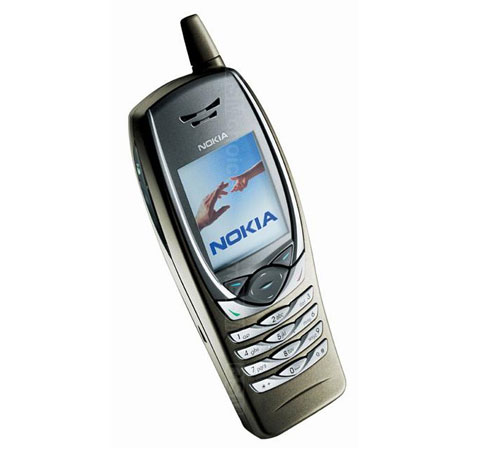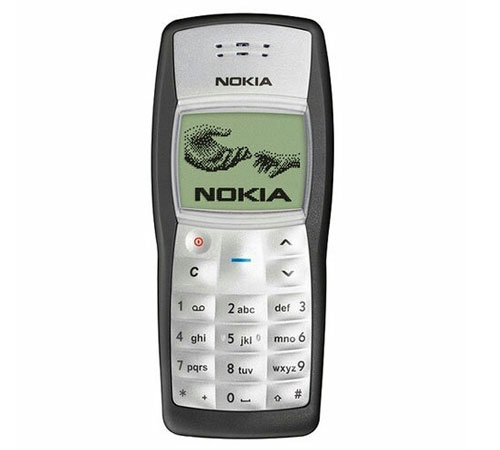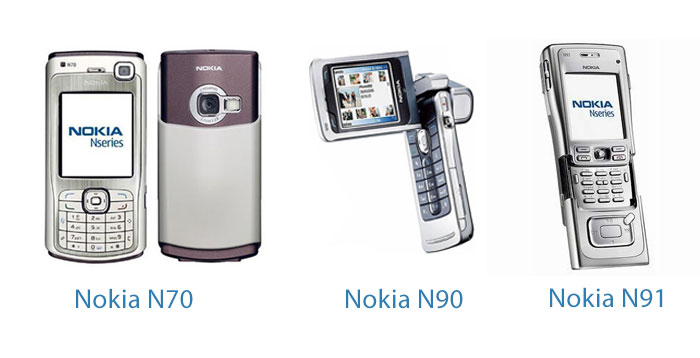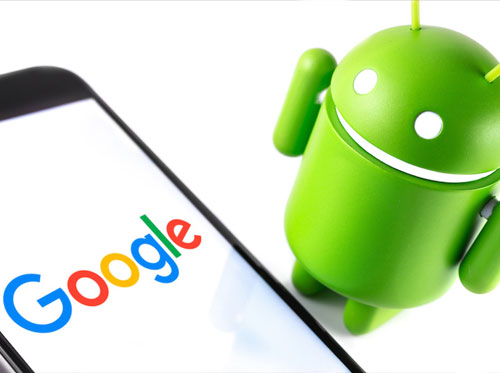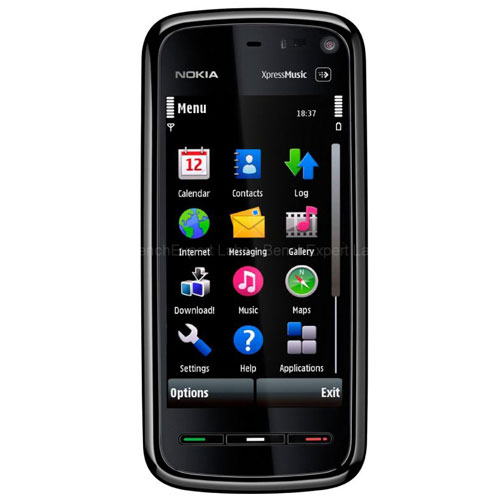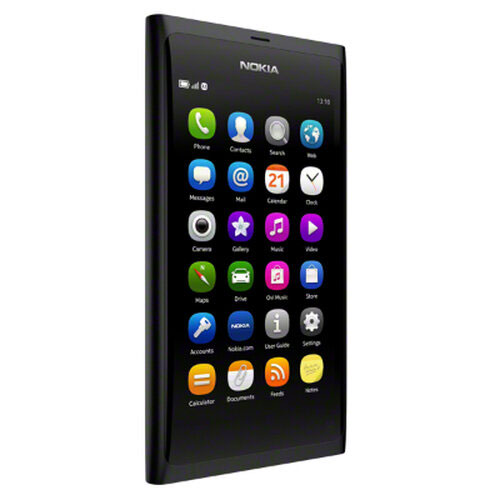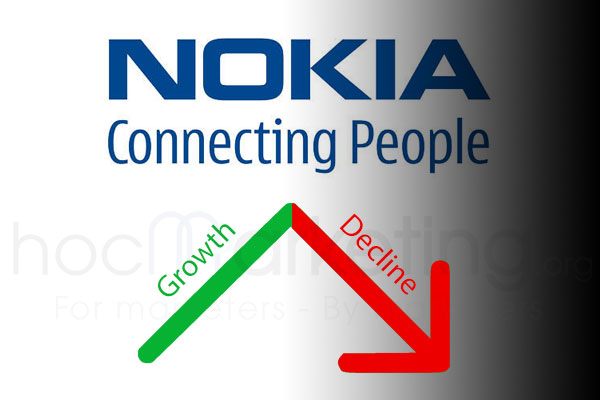
The rise and downfall of Nokia

Nokia was the world's largest and most powerful mobile phone maker in the early 2000s. However, since then they have lost a lot of their market share to other companies like Apple and Samsung. This blog post will explore what happened with Nokia and how we can learn from their mistakes to avoid them ourselves.
In the early 2000s, Nokia could be seen as the king of the mobile phone market, with a large share of the world market. At that time, Nokia had almost no competition when they had in hand the highly appreciated and popular products such as Nokia 1280, Nokia 5300, Nokia N91, Nokia N95. However, not long after that, the brand began to slow down and decline as it saw its market share gradually fall into the hands of other companies such as Apple and Samsung. In 2014, realizing that it was no longer able to sustain in the mobile phone market, Nokia sold this business to Microsoft. So what caused the once king of the mobile industry to collapse in just about 10 years? This article will tell you what happened to Nokia and the valuable lessons learned from this story.
The rise Nokia
1865: Nokia was founded
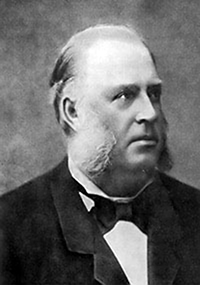
Fredrik Idestam - Founder of Nokia
Nokia was founded in 1865 by Fredrik Idestam - an experienced engineer in Tempere, Finland (Finland). However, the name Nokia has not been born yet. Initially, this business was a pulp mill and manufacture of paper products. In 1871, he opened a second factory on the banks of the Nokianvirta river. It was this waterfront that inspired Idestam to name his company Nokia Ab. In 1979, Nokia started researching and manufacturing telecommunications products. Initially, the products they supplied to the market were mainly radio equipment, desk phones, TVs... In the same year, the company decided to merge with Salora Oy - an enterprise manufacturing electrical equipments. died, separating the mobile device business under the name Nokia - Mobira Oy. This event marks the official entry of Nokia into the mobile phone manufacturing industry.
1984: Nokia's first mobile phone
Mobira Cityman 900
In 1984, Nokia released its first mobile phone to the public: Mobira Cityman 900. This phone used the NMT–900 network with better signal strength (NMT-900 network) and weight. (800g) was much lighter than portable products on the market at that time (Example: Mobira Senator - 9.8kg, Talkman - under 5kg). At this time, mobile phones were considered a luxury device, only available to the aristocracy and royalty. However, it is because of the improvement in the design of Mobira Cityman 900 that this product is very much sought after by the rich. In 1987, a reporter accidentally saw a Soviet leader Mikhail Gorbachev using a Mobira Cityman in Helsinki. The phone was nicknamed "Gorba".
Realizing the potential of the mobile phone market, in 1989, Nokia-Mobira Oy was renamed "Nokia Mobile Phones" and continued to invest heavily to develop new products.
1992: The next breakthrough with the Nokia 1011
Nokia's big break came in 1987 when they announced a new phone: the Nokia 1011, also known as 'The Brick'. This was the first mass-produced GSM (Global System for Mobile Communications) phone. In addition to an extremely compact design compared to contemporary phones on the market (195 x 60 x 45 mm), the Nokia 1011 also features a monochrome LCD display and an expandable antenna. Besides, this phone is also equipped with memory that can store up to 99 phone numbers and the ability to send SMS messages. At the time of its launch, the Nokia 1011 was a huge hit, taking Nokia's name to the next level in the telephony and telecommunications industry, even though mobile phones were still not widely available at the time.
A few years later, the company launched the Nokia 2100 series, which was also the first to feature the iconic Nokia Tune ringtone. While Nokia was expected to sell 400,000 units, the series turned out to be a blockbuster with around 20 million handsets sold worldwide.
1996: Nokia 9000 Communicator & Nokia 8110
The Nokia 9000 Communicator was the next generation of phone released by Nokia in 1996 for $800. This product represents Nokia's next strategic move, as it allows users to email, fax and browse the web, while providing word processing and spreadsheet capabilities. However, because the design is not very convenient for users, as well as the functions are not optimized for user experience, this product has not been very successful commercially, despite being recognized by industry experts. Technology appreciates innovation and breakthroughs.
That same year, the company also released the Nokia 8110 slider phone. The product was also nicknamed the "banana phone", appearing in the popular 1999 sci-fi action film The Matrix.
1998: Dominating the global mobile phone market
In 1988, Nokia launched the next generation mobile phone model - Nokia's 6100 series. This is the product line that brings Nokia's name to the world, with compact design, easy-to-use buttons and LCD screen. Besides, the legendary Snake game pre-installed inside the phone also created a fever in the user community. Sales of the Nokia 6100 series reached nearly 41 million units in 1998 - helping the company overtake Motorola and become the world's top mobile phone manufacturer that year.
Besides the Nokia 6100 series, Nokia 8810 was also launched by Nokia in the same year. This is the first flagship phone without an external antenna with a sliding chrome cover.
With two groundbreaking and commercially successful new product lines, Nokia saw a jump in business results as the company's net revenue increased by more than 50% year-on-year, operating profit increased. nearly 75% and the stock price skyrocketed 220%, resulting in an increase in market capitalization from nearly $21 billion to about $70 billion.
Following the success, the following year - 1999, this business continued to launch Nokia 3210 - with a solid design with 6 color versions and impressive talk time of 4-5 hours. . In addition to providing additional ringtones and games, the device also allows users to send pre-installed picture messages (like Happy Birthday) via SMS. Around 160 million phones were sold, making it one of the most popular and successful phones in history.
2000 - 2006: King of the early digital era
2000 is considered a milestone marking the beginning of the world entering the digital era, when revolutionary technology products were born: digital cameras, mp3 players, CDs, DVDs. , 2G, 3G networks... Nokia also showed extremely good adaptation to this macro change with new product lines.
Nokia 7650 is Nokia's first answer. This is the first phone equipped with a camera that can take pictures, store photos and a color screen. This product was launched in 2001.
In the following year - 2002, Nokia continued to launch the first 3G phone - Nokia 6650. In the same year, the company also launched Nokia 3650 - the first Symbian software phone line. The first is equipped with a camera with video recording function.
Besides the high-end segment, Nokia also targets the popular segment. In 2003, this business launched the Nokia 1100, a low-cost phone with a compact, easy-to-use, durable design that well met basic needs such as listening, calling, texting, support. good telecommunications bands in countries around the world. With sales of about 250 million units in its launch year, the Nokia 1100 is listed as one of the best-selling consumer electronics products in the world. By 2005, the number had reached 1 billion units.
In the following year - 2004, Nokia continued to launch the "lipstick" phone - Nokia 7280 with stylish design, 65 thousand color screen, right resolution of 208x104 px, 50MB internal memory, 700 mAh battery, and other advanced technologies such as voice commands, custom themes (interface)...
The next flagship series launched by Nokia in 2005 included with N70, N90 and N91 with many improvements in design, camera function, storage capacity, memory capacity, battery life, speakers.. These products are considered the pinnacle of technology at that time.
In 2007, Nokia's business report showed that the business owned nearly 50% share of the mobile phone market in the world. Its revenue is about 150 billion dollars and it has about one million employees.
The downfall of Nokia
2006: A major change in Nokia's leadership and business strategy
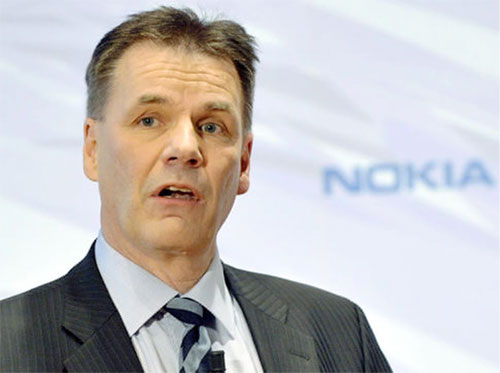
Olli-Pekka Kallasvuo - Nokia's new CEO in 2006
In 2006, Olli-Pekka Kallasvuo was appointed as the new chief executive officer (replacing Mr. Jorma Ollila) along with several new board members. Following a new leadership restructuring, Nokia consolidated Nokia smartphones and feature phone operations, focusing more on traditional phones rather than experimenting with new technology. This step shows that Nokia is shifting to a strategy of pursuing profits, instead of focusing on researching new breakthrough technology products as before.
Mr. Olli-Pekka Kallasvuo himself is also considered to be quite rigid in his views on business strategy, as he often rejects ideas about new products and new technologies, focusing only on safe products. can soon bring revenue and profit.
Nokia itself did not expect that it was this strategic move that caused the business to enter the process of falling without brakes in the following years.
2007: Steve Jobs introduced the first iPhone
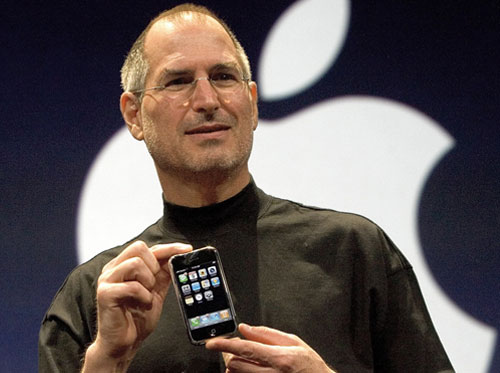
Steve Jobs in the iPhone presentation - 2007
In 2007, the whole world admired the launch of the iPhone from Apple - a competitor far behind Nokia in terms of name, market share and scale. However, this is a revolutionary product of the mobile phone industry, marking the end of the digital phone era and ushering in a new era - the smartphone. Compared to the mobile phone models on the market at that time, the iPhone design was completely different, with only the Home key, power and volume up and down, the rest of the operations were done on one screen. Touch with iOS operating system, with an application store that allows users to download and install via the Internet easily.
In response to the successful launch, Nokia responded with indifference, derision, and laughter, arguing that the new iPhone technologies were not usable, and that consumers had to pay too high a price to pay for it. own an iPhone.
The introduction of the iPhone caused Nokia to lose only 3% of the market share at the end of 2007. Of course, Nokia has reasons to ignore, for example, the iPhone only has 2G connectivity while Nokia phones have 3G connectivity. However, Nokia executives slept with their victory for too long and this caused them to fall into many subsequent stumbles.
2008: Android OS was released
After the successful launch of the iPhone, in 2008, Google continued to enter the smartphone market with an operating system for mobile devices called Android. However, instead of realizing the opportunity to beat Apple by switching to Android, Nokia management is still confident with its Symbian operating system, with plans to develop a new operating system of its own - MeeGo and believe that Google too small a company to be concerned with.
Specifically, Nokia launched the 5800 Express series in 2018, with a large hard touch screen to catch up with competitors, but encountered a fatal weakness - Symbian - a software (can be seen as an operating system). operating system) which was too weak, backward, far behind iOS and Android at that time.
Meanwhile, the iPhone became more popular. Apple has seen its revenue grow steadily.
2010: Olli-Pekka Kallasvuo was replaced by Stephen Elop

Stephen Elop - Nokia's new CEO in 2010
From 2008 to 2010, the new Nokia products that did not launch did not create commercial success, instead, witnessed the aversion from users. Meanwhile, Android smartphone manufacturers such as Samsung and Huewei experienced strong growth. At this point Nokia realized they needed to change if they didn't want to see Nokia fall into a stalemate. As a result, they fired Olli-Pekka Kallasvuo and recruited Stephen Elop from Microsoft.
2011: Nokia partnered with Microsoft
In 2011, Nokia launched the N9 running a new operating system they developed themselves - MeeGo. Unfortunately, due to the short development process, coupled with the weakening of vision and experience in operating systems, MeeGo encountered widespread problems, security concerns, as well as a poor application store. , less attractive to programmers. In the end, the N9 died prematurely even though Nokia invested in a Marketing campaign for the new product.
After the failure of MeeGo with the N9, Nokia partnered with Microsoft to produce Nokia smartphones running Windows Phone. Nokia itself did not expect that this is the company's next error management company.
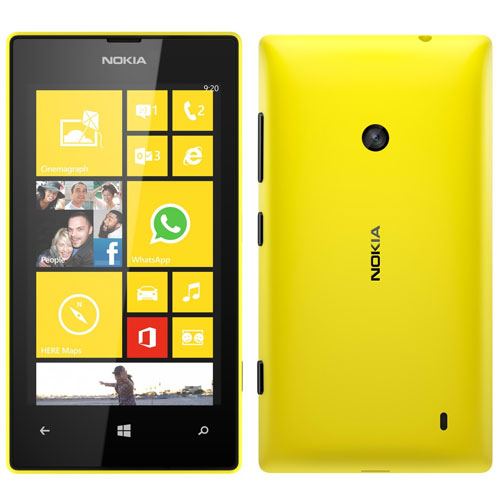
Nokia Lumia running Windows Phone
After the cooperation process, Nokia has launched a product line to run Android operating system - Nokia Lumia. This eye out that helps Nokia reduce the decline in market share, when Windows Phone has a pretty user-friendly interface design. However, Windows Phone is still far behind iOS and Android in terms of application stores. To overcome the weakness, Microsoft also has a lot of action to attract developers, but this could not attract better results because Google and Apple did it earlier and better. Finally, after the setback, Nokia continued to see the decline half a year later.
2014: Nokia was on the verge of bankruptcy
In 2014, Nokia was on the verge of bankruptcy. With no other choice, Nokia had to sell its mobile phone business to Microsoft for just $7 billion.
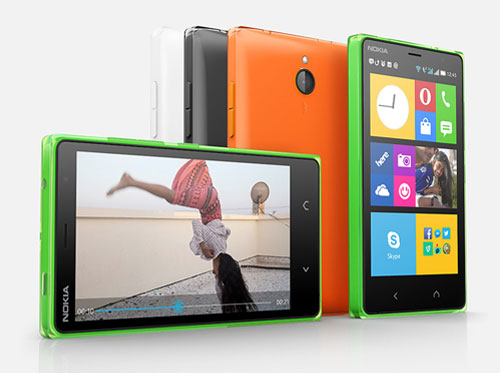
Nokia X and Nokia XL running Android
A few years later, Microsoft released the Nokia X and Nokia XL running Android. However, due to the short development time, the Android Nokia couple is said to be quite lagging behind other phone companies such as Samsung, Huewei... which has been extremely well optimized for the Android operating system.
Years later, Microsoft did not spend much budget on the production of phones to focus on other products such as Windows, Office, Xbox, Surface ...
Now: Nokia is only a memory
Reasons causing the downfall
Nokia has slept too long in the last victory
In 2006, when Olli-Pekka Kallasvuo took over the company, it was already a large and powerful company. However, Nokia did not go forward with its development and instead slept in victory for too long. The iPhone appeared at 2007 and Android appeared at 2008 but Nokia did not change anything. Many years later, Nokia could not launch any successful phone.
Nokia reacted slowly to the changes of the technology environment
Apple has seen the future of smartphone from the beginning. The launch of iPhone in 2007 has marked that the era of traditional phone would end soon. However, Nokia's board of directors tooked more than 4 years to realized that.
Nokia chose the wrong partner
If Nokia chose to partner with Google to make Android Nokia phones, the game could have been changed a lot. Of course, when telling about decision making, we tell about the board of directors of the company.
Nokia had a bad board of directors
Since Olli-Pekka Kallasvuo was appointed as the company CEO, Nokia has only saw years of going down. The new board of directors did not listen to anyone, even their staff. Profit was pinned as the top priority, instead of consumers.
Lessons from the case
Do not sleep too long in victory
We all have the right to be happy and proud of our victory. However, the game always keep going in business. Competitors will take the advantage of the moment you sleep to gain advantages.
Becareful of changes in the macro-environment
Any changes in the macro-environment could bring down a large business. Let's look at Nokia, Kodak, Blockbuster... Do not let your self dive in marketing myopia. Instead, always be conscious and have a plan to react wisely with those changes.
Stay focus on final consumers instead of competitors
Nokia focused too much on the competition, therefore, they could not know what their consumers really need and want. Then, app store, user experience, privacy... are things they did not concern about. As a result, they chose to partner with Microsoft instead of Google.
Summary
In the early 2000s, Nokia was at the top of its game and had a strong hold on about 40% of all global mobile phone sales. However, due to late reactions to changes in technology (such as Apple's iPhone) and bad decision making from leadership, it has fallen hard in recent years. Nowadays Nokia is only known for being an old Finnish company that used to make phones but doesn't anymore. A good example of how not reacting quickly enough can hurt a business!

